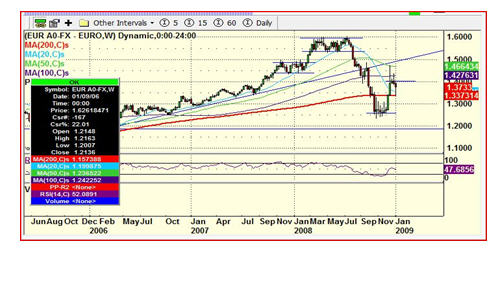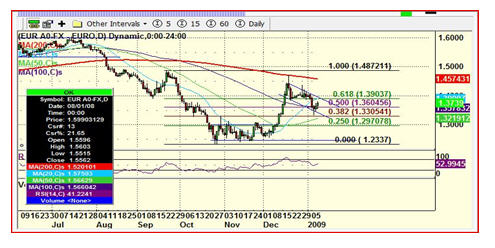How to Stay Focused on the Big Picture Using Multiple Timeframes, Indicators & Various News Sources
New traders to Foreign Exchange (Forex) trading often get lulled into a feeling of complacency, thinking that they can reduce what they follow or focus on, to a handful of indicators or charts. This may work in the short term but it can also be a disaster waiting to happen.
Forex traders must be diligent and watch for calamities at every turn and observe several time frames and strategies to avoid having one no longer work when they least expect it. Simultaneously, there are constant news events that cause moves in all pairs at the same time and in many instances in the same direction. It is imperative to know where to monitor these events to hedge, liquidate, or watch your stop losses very closely during these times. If you follow these simple guidelines you can avoid many unfortunate losses by preparing in advance. Follow these three steps: 1. Chart Set-up. 2. Indicator set-up 3. Following multiple countries’ news in real time.
Step One:
When deciding which direction to trade a currency pair it is important to start your analysis by looking at the big picture: weekly chart. From here trend lines can be drawn and a general trend can be determined. Next, move on to the daily chart and determine if the trend is 1. Continuing or 2. Changing. Each assessment will determine how you structure your trades. Then you need to move to the 15 minute chart and finally the 3 or 5 minute chart to identify your entry points. More on this later. Example of this below:
Weekly Chart:

Daily Chart:

Step Two:
Once you have determined which direction you believe the currency pair to be moving and the type of trade you want to establish, you can set up your chart with multiple indicators to alert you to the precise entry point. There are dozens to choose from: the most popular are Fibonacci Numbers (https://www.fibmarkets.com/index.html), Pivot Points and Average True Range (ATR). The point I want to convey foremost is to avoid relying on just one indicator, or timing system. No indicator is going to work all the time or for every pair. There are times when one will work better than another. This is where experimentation and communication with other traders is so important. (Pivot points for currency pairs can be found via calculators on the web.) With the Fib numbers, ATR, and the pivot points in mind a buy point, target point, and stop loss point can be notated. The trade could be automated or manually entered at this point.

In this example, the long term trend is up for the Euro, with a rather large correction. A trade could be established to capture the move (short) back to its 200 day moving average, the .50 Fib, or the .618 Fib. Contrarily a trade could be entered (long) believing the long term trend was to return.
Step Three:
Now that money is “at risk” to back up your analysis of what you believe is to occur in the currency markets it is extremely important to monitor all news events and be aware of the times when a country could somehow move your currency pair. There are several excellent resources for monitoring upcoming news. Forexfactory.com is by far the most visually helpful: with yellow, orange, and red for importance/ impact upon the global marketplace and the pair in particular. If you are easily distracted throughout the day it is important to set alarms either within your trading software or via your computer. (At the very least have your iPhone set to vibrate at the prescribed time.) The number of traders who are liquidated during these specific times of day is astounding and avoidable. Don’t be a statistic. Set your alarms and if a trade is not working out, get out during the volatile news periods.
The recommendations made here may seem simple and self evident, however it is important to re-enforce good habits and remove bad ones. How often have you made a bad trade and said to yourself: “But I know NOT to do that!” It is important to follow sound, logical, and consistent practices and determine what works for you and what does not. Knowing where the “landmines” are and how to avoid them may seem obvious and avoidable after the fact, but may require years of experience to know what are inherently important. The concepts of multiple time-frames, multiple strategies, and keeping your eyes open for upcoming news events are tools you will need to avoid problems.
If you have questions or comments regarding this article, please feel free to contact me. I can assist with questions of a general or specific nature. Additionally, please feel free to contact me directly to open a forex or equities account.
Keith O’Toole is COO of MB Trading. Prior to joining MB Trading in 1998, Mr. O’Toole worked with the Merrill Lynch Asset Management/ Hotchkis & Wiley funds. During his time here at MB Trading, Mr. O’Toole was the Options Principal and Mutual Fund Principal for seven years. He has his Series 3, 4, 7, 24, 53, & 63 industry licenses. He can be reached at Keith@mbtrading.com.
Click here to sign up for a free, online presentation by Larry Connors, CEO and founder of TradingMarkets, as he introduces The Machine, the first and only financial software that allows traders and investors to design and build quantified portfolios.
